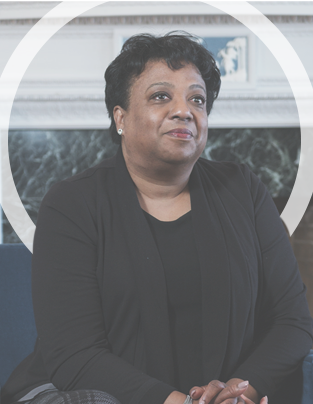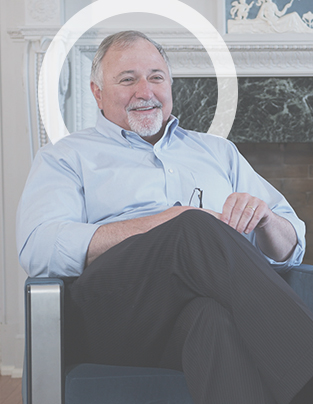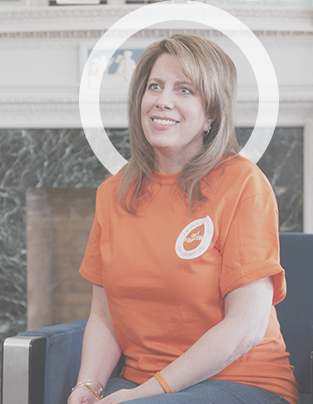Author: Conrad M. Siegel, Past Chairman, Investment Advisory Committee & Board of Directors
Our donors, recipient agencies, and potential donors have asked many questions about our investment policy, spending policy and fee structure. Since the majority of our funds are invested under Model E (100% equity funds), the illustrations below are based upon this model. The fee and spending policy is based on an Agency Fund type. The final questions illustrate the differences for investment Models A and F, and other fee levels.
FAQ1. What prompted the change in policy effective the beginning of 1996?
Answer:
Our grant distributions to charities were declining due to the drop in interest rates on bonds and low dividend yields on stocks. We were distributing interest and dividends only, and because our investment policy was yield-oriented, we avoided growth stocks that paid little or no dividends.
FAQ2. What changes were made?
Answer:
We adopted a total return philosophy that seeks not only interest and dividends, but also capital appreciation, both realized and unrealized.
FAQ3. How did this change affect your spending policy?
Answer:
The spending rate policy produces the amount that can be granted out of a fund each year. Instead of “spending” interest and dividends only, we adopted a spending policy of 6.2% of blended market value (for funds invested in Model E). The rate is designed to allow for inflationary growth in future distributions.
FAQ4. Does this spending rate include any fees?
Answer:
This rate is net of an annual investment management fee of 0.4%, which offsets TFEC’s expenses related to investment execution and processing. All fund types, except those held by outside Custodians, are subject to the same annual investment management fee of 0.4%. The gross spending rate is 6.2%, less the administrative fee discussed below.
FAQ5. Are there other fees charged against the spending rate?
Answer:
Yes. TFEC’s administrative fees for a particular type of fund also are charged annually. Depending upon the type of fund, administrative fees currently range from 1.45% to 2.70%. For example, an Agency Fund invested in Model E has an annual administrative fee rate of 1.45% of market value of assets. Therefore, the net spending rate becomes 4.75%, or 6.2% less the 1.45% administration fee. This net spending rate, when applied to blended market value (see FAQ6), results in the amount to be distributed to the grantee.
FAQ6. Why isn’t the spending policy rate applied to the fund’s market value each year?
Answer:
The net spending rate is applied to a “blended market value,” which is an average of market values over a five-year period. The blending calculation smoothes out market upswings and downturns, and spreads out investment returns over five years. It also allows for full-value growth from new contributions. In order to prevent the blended market value from deviating too far from the actual market value, the blended market value is not less than 80% or more than 120% of the actual market value. The combination of these calculations enables the fund to generate relatively stable spending amounts regardless of market fluctuations.
FAQ7. Why not distribute the current year’s actual market return?
Answer:
It is, of course, possible for the current return to be negative, as occurred in the period 2000-2002, 2008, 2011 & 2015 when the stock market declined. Without having a blended market value, funds could not, make grants in negative years, and it would not be possible to ask agencies to give money back to The Foundation. What we are trying to do is achieve stability in the spending amount so that one year’s distribution does not vary precipitously, up or down, from the prior year.
FAQ8. How do you choose your investments?
Answer:
Our investment policy is largely based on the use of mutual funds invested in common stocks indices and passive portfolios. We use mutual funds to achieve adequate diversification, rather than purchasing individual stocks.
FAQ9. What are index mutual funds?
Answer:
Index mutual funds buy stocks that mirror recognized performance benchmarks. The indices weight the effect of each stock by the number of shares outstanding and the market value of each share. The well-recognized indexes that we use include the S&P 500 Index (large capitalization stocks), the Russell 2000 (mid-capitalization stocks), and the MSCI EAFE (international stocks).
FAQ10. Index fund investing is passive. Why not choose actively managed mutual funds?
Answer:
S&P 500 index funds have outperformed 80% of the managed general equity mutual funds over the past twenty years. We seek to achieve the results of the index and are willing to forego the chance of picking a better performing fund from the remaining 20%. Similarly, the mid-cap and small-cap index funds have outperformed actively managed funds of similar investment guidelines.
FAQ11. Are all of your investments in index funds?
Answer:
No. We invest in the Vanguard S&P 500, the Vanguard Mid-Cap, the DFA Micro-Cap Fund and DFA international funds. The Vanguard Funds adhere to traditional indexing strategies, but DFA funds do not slavishly follow the indexes. They start with a broad list of stocks and eliminate those that have little trading, are in bankruptcy, etc.
FAQ12. Why are the majority of your equity investments in an S&P 500 Index fund?
Answer:
In order to achieve the returns of our benchmark, we hold approximately the proportion of the market capitalization of the S&P 500 to the total U.S. market capitalization.
FAQ13. The world-wide market capitalization shows that non-U.S. stocks amount to 50-60% of the world-wide market capitalization. Why is your international component less than these figures?
Answer:
Our requirements are to provide grants for charities in U.S. dollars. Non-U.S. investments involve political risk, currency risk, liquidity risks of securities markets (which are much less liquid than U.S. securities markets), and the uncertainty of accounting standards (which are less rigorous than U.S. standards). Actually, when we determined our investment policy in late 1995, the market capitalization of non-U.S. stocks amounted to about 80% of the world market capitalization. The U.S. market, our principal investment vehicle, had done much better since 1996, with some exceptions, than the foreign markets.
In addition, many of the companies in the U.S. index portfolio, such as Coca Cola, Gillette and McDonalds, have very significant international investments.
FAQ14. The S&P 500 index is dominated by large blue chip companies such as GE, Exxon and Microsoft. Aren’t you in danger of “chasing” those stocks like investment managers did in the 1970’s with the “nifty 50” stocks such as Polaroid and IBM, which then suffered significantly in the 1980’s and 1990’s?
Answer:
The strength of the index is that the collective investment wisdom of the entire market determines the number of shares that are outstanding and their price per share. Thus, an automatic adjustment is made every day for the different weighting within the index of each stock. This is different from the “one-decision” stocks of the 1970’s.
FAQ15. Why have index funds performed so well relative to actively managed funds?
Answer:
Part of this performance is due to lower fees charged against indexed funds. Also, commissions paid on security transactions are very low because of the large size of the funds. In addition, almost no un-invested cash is maintained by the funds, and there is very little asset turnover.
FAQ16. What if the stock market falls by 20%?
Answer:
It has done so! However, this doesn’t cause a problem because we are investing these funds in perpetuity and our only requirement is that we must satisfy our spending policy. Because our blended market value calculation averages investment returns over a five-year period, a 20% drop in the market would involve a relatively small change in the spending amount for the next year. We also employ an 80% – 120% collar of actual market value, which keeps the funds’ blended market value from diverging too far from actual market returns.
FAQ17. Is the market too high now? Why not sell and get back in when it is lower?
Answer:
We have never seen any objective studies of the success of “market timing.” Market timing involves two critical decisions—when to get out and when to get back in. Our policy is to be fully invested.
FAQ18. Is it appropriate to invest 100% in equities?
Answer:
John Bogle, founder of Vanguard Investments, studied the investment results over 121 years from 1872 to 1992. He found average annual returns to be 8.8% for large capitalization stocks, 4.6% for long-term bonds and 4.2% for short-term treasuries (see Bogle on Mutual Funds). The superiority in the very long-term of common stocks is compelling, especially in our situation where the investment is perpetual and only a return on investment is desired (we don’t have a need to take lump sum cash out of the investment). The recent decade, of course, illustrates what can happen in the market. Common stock returns over the years are as follows:
| Beginning of | to | End of | Annual Return | |
| 1872 | 1925 | 7.0% | ||
| 1926 | 1969 | 9.6% | ||
| 1970 | 1997 | 13.0% | ||
| 1980 | 2001 | 13.0% | ||
| 2001 | 2011 | 1.5% | ||
| 2011 | 2015 | 12.6% |
By using a conservative spending rate, such as 4.75% net, applied to a five-year blended market value, we provide a reasonable approach to endowment management. TFEC also offers investment Model A, with 70% equities & 30% fixed income investments, as an available alternative. In addition, we offer Model F, a 100% fixed income fund. Model F may be combined in any proportion with Model E to achieve whatever asset allocation mix (and risk tolerance) is desired.
FAQ19. How does the Model A investment model differ from Model E?
Answer:
Model A, being a 70% stock & 30% fixed income policy, is expected to have lower total returns over the long term, but less year-to-year volatility. The 70% equity portion is invested in the same funds as Model E. The remaining 30% is invested in fixed income mutual funds of mid-term duration. The net spending policy for Model A is 3.75%, rather than 4.75% (assuming an agency fund).
FAQ20. So far, you have been discussing agency funds. How do these answers differ for other types of funds?
Answer:
Higher administrative fee rates, which reflect increased work in dealing with grant making, result in a lower “expected” return rate for those funds. The net spending rate for other types of funds reflects the increased work in grant making.
FAQ21. How do these answers differ for charitable remainder unitrusts?
Answer:
Our investment models are also available for charitable remainder unitrusts. However, by the very nature of unitrust, the unitrust spending rate, initially established at the inception of the unitrust, must be applied to the January 1 market value and not an averaged market value. Thus, the dollars paid out will reflect greater year-to-year fluctuations. Generally, when funds donated to a unitrust consist of stocks which are yielding about 1 1/2% – 2% at market and the unitrust pays 5% – 10%, the gross distribution improves significantly. Thus, even a significant reduction in market value is likely to keep the total income distribution at a higher level than before the unitrust was established.
FAQ22. Are these provisions subject to change?
Answer:
Yes. The Investment Advisory Committee and the Board of Directors periodically evaluate these policies and modify them if appropriate. Investment returns may fluctuate significantly from time to time, and past results may not be indicative of future performance. Our policies, however, are based upon long-term outlook and are not designed for frequent revision.




